Riga’s visitors are happy to stroll through its medieval old town and admire its stunning art nouveau city centre, but seldom do they cross over to the River Daugava’s left bank, unless of course they’re on their way to the airport. An odd combination of wide-open green spaces, Soviet housing estates, charming 19th-century neighbourhoods and aging factories, Pārdaugava, as it’s known in Latvian, or Over Daugava to translate literally, is often a hard place to get your bearings. However, those intrepid travellers who are brave enough to walk across a bridge or take a short tram ride will discover a town within a city that has its own spirit, history and traditions. (For complete reviews, opening times and more info see the list of venues at the bottom of the feature).
GETTING THERE
The best way to get to Pārdaugava is either to walk across the Vanšu or Akmens bridges or to take trams, especially during rush hour. For the Railway Museum, Soviet Victory Monument, Arcadia Park, the Monument to the Repressed and the Riga Luther Church take tram N°10. For the Āgenskalns Market take tram N°2, but for many of the area's best restaurants and bars as well as the Kalnciema kvartāls and the Botanical Gardens take tram N°1 or 5.
SIGHTS
Āgenskalns Market (Āgenskalna tirgus)
Although construction of Riga’s third largest market began in 1911, due to WWI it wasn’t completed until 1923. Since then this red brick building has become the focal point of the local community. It’s home to numerous stalls selling anything from pork and poultry to dairy products and fresh vegetables. Unfortunately, the years have not been kind to this historic landmark and a general feeling of depression seems to reside in its halls. Take the stairs to the second floor for great views of the bustle below and cheap food and drink at the café. Nometņu 64.
Āgenskalns Water Tower (Āgenskalna ūdenstornis)
This stunning water tower dating from 1910 was the brainchild of prolific architect Wilhelm Bockslaff. Riga was experiencing a golden age of construction and development at the time, so it was created, not surprisingly, to provide fresh drinking water to an exploding population. The impressive structure rises to a height of 40m and has 2m-thick brick walls, as well as a stylised version of Riga’s coat of arms above the entrance. It was also used as an underground recording studio called ‘Tornis’ from 1991 - 2010. Alīses 4.
Arcadia Park (Arkādijas Parks)
Created at the turn of the 19th and 20th centuries, this pleasant park is divided by the meandering Mārupīte river which was diverted for the project. A restaurant building and an amphitheatre were part of the original park but were burned down over the years by vandals and never restored. Today, you can follow the course of the river and feed ducks from its banks or take in the view from the top of the hill. Take tram N°10 from Grēcinieku to the Arkādijas parks stop. Between O. Vācieša and F. Brīvzemnieka.
Castle of Light - National Library (Gaismas pils - Nacionālā bibliotēka)
The Latvian National Library is the brainchild of American-Latvian architect Gunnar Birkerts, who is perhaps best known for his creations in the United States which include the Corning Museum of Glass in New York State and the Law Library Building at the University of Michigan. Its shape is a symbolic expression of the Hill of Glass and the Castle of Light found in Latvian folklore. Legend has it that the Castle of Light sank into an ancient lake and would only arise from the depths when Latvians were once again masters of their own land. The building is finally open to the public and it hosts a variety of exhibitions and events. Mūkusalas 3.
Ķīpsala Beach (summer only)
You can cool off in the River Daugava right in the centre of Riga. Just walk, cycle or take a bus across the Vanšu Bridge to the Left Bank and you’ll see a proper beach on the right side. Changing cabins are available as well as two portable toilets (hidden behind some bushes near the highway) and even a beach volleyball court. Unlike nearby Baltic Sea beaches, you don’t have to walk half a kilometre to get wet. Just dive right in! Balasta dambis.
Holy Trinity Church of Pārdaugava (Sv. Trijādības baznīca)
Although an older church dating back to 1453 once stood here, the current 17th-century Russian baroque-style building was completed in 1893. Designed in the shape of the Orthodox cross, its soaring belfry and blue and green onion domes can be seen from quite a distance. Inside you’ll find the smell of incense and hundreds of icons common to Orthodox churches. Meža 2.
Latvian Railway Museum (Latvijas dzelzceļa muzejs)
Retrace the tracks of rail history in Latvia in this museum run by Latvian Railways (Latvijas dzelzceļš). Inside the brick hangar you’ll find old photographs, antiquated machines and a few specimens of old wagons. Outside you can look at restored Soviet diesel and electric locomotives built in Ukraine and Russia as well as a German locomotive built in 1942 that no doubt became a spoil of war. Don’t miss the Tsarist era prison car. Uzvaras 2/4.
Monument to the Repressed
During the Soviet occupation of Latvia, tens of thousands of men, women and children were ripped from their homes and sent to Siberia as slave labour. The most infamous dates for deportation are June 13 - 14, 1941 and March 25, 1949, when roughly 15,000 and 42,000 people, respectively, were abducted in the middle of the night. They were ordered to pack warm clothes, were driven to train stations and were crammed into cattle cars for the long trip to destinations unknown. Few ever returned. A monument has been erected in memory of these people at the station from which many began their horrible journey. Take tram N°10 from Grēcinieku to the Torņakalna stacija stop. The monument is directly behind the station. Torņakalns train station.
Soviet Victory Monument (Uzvaras piemineklis)
The Soviet war memorial which commemorates the supposed communist ‘liberation’ of Riga is the place to meet die hard reds on Soviet anniversary days. Built in 1985 to lionise the Red Army and to dishearten the Latvian populace, the monument consists of a tall concrete obelisk adorned with five golden stars symbolising the five years of WWII. On either side are bronze statues of Mother Russia and soldiers advancing with their weapons raised. Take tram N°5 from 11. Novembra krastmala to the second stop over the Akmens Bridge. Over the Akmens Bridge in Pārdaugava.
Univerisity of Latvia Botanical Gardens
Although Latvia’s oldest botanical garden began its existence in a different location in 1922, the Latvian government allocated the 10h of land at its current address in 1926. Since then the gardens have flourished and today you’ll find thousands of common and rare flowers, plants and trees here as well as a pond, a huge palm house and a butterfly house. The palm house also includes a specimen of wollemia nobilis, an ancient tree thought to be extinct for hundreds of millions of years until it was discovered in a remote location in Australia in 1994. The butterfly house is kept at a balmy temperature of 30°C and 90% humidity, so photography is challenging, but you’ll be able to see plenty of these beautiful creatures with the naked eye. Take tram No.4 from Grēcinieku to the Dzirciema iela stop and then walk back to the main entrance. Kandavas 2.
Žanis Lipke Memorial Museum
This modern, interactive museum designed by a prominent local architect tells the little-known tale of Žanis Lipke and the network of roughly 25 people that saved Jews from the Nazis during the German occupation of Latvia. Not only did he hide people in a bunker on his own land that now hosts this museum, but he and his colleagues also helped Jews to escape local ghettoes and then transported them to safe houses around the country. Although Mr. Lipke and his wife Johanna survived this noble undertaking, other members of the underground were caught and killed. A free audio guide will help you navigate the half light of the museum, which is left intentionally dark to mimic the conditions endured by families hiding in bunkers and warehouses. Mazais Balasta dambis 8.
FOOD & DRINK
Cepiens
This up-and-coming area of Riga’s Left Bank, or Pārdaugava, is quickly becoming a favourite locale amongst Latvians who want a great meal, but not for Old Riga prices and Cepiens is a perfect example of this philosophy. Order a huge pork chop with all the trimmings for only €6, a huge duck leg, a steak or a big bowl of pasta or stir-fried noodles in a cosy, yet modern atmosphere where you can expect grey walls covered in contemporary art and fresh flowers on each table. A children’s corner is available, but bear in mind that you have to order at the bar, which also lists the day’s menu on its blackboard. Meža 4A.
Ciemakukulis
You can order unique cakes and traditional Latvian pastries for special occasions or just drop by for an espresso and an éclair in this cosy space decorated with antiques, dried flowers, potted plants and books. If you’re hungry you can also buy a sandwich and the soup of the day. In case you’re wondering, a ciemakukulis is basically something, usually bread, a cake or anything edible, that Latvians bring with them when visiting friends or relatives. Nometņu 9.
Dēkainis
Owned and run by members of a local motorcycle club, this casual café and bar located in a restored 19th-century wooden building offers plenty of alcoholic beverages, pizzas and whatever else the cook thinks of from day to day. Although it’s often full of guests from the small hotel housed in the building, its affordable prices also draw in locals from the neighbourhood. In the summer, a lush garden terrace is also at your disposal. Baložu 12.
Fazenda
The rooms of this historic building have only partially been restored as the designers decided to simply sand down the existing wood plank walls and ceilings to create a cosy atmosphere that is only enhanced by the tile mosaic tables, the fireplace and the hanging dried flowers. You can sit down for a full meal of international dishes from salads and seafood to steaks or try something from the vegetarian menu or the breakfast meals (served until 12:00, Sat, Sun 14:00). You can also just grab a slice of cake and a latte at the counter. Nometņu 7.
Fontaine Delisnack Riga
This popular local chain of 24-hour fast food joints also has an outlet just across the way from the Āgenskalns Market on the left bank of the River Daugava. A faded tile chessboard floor awaits you as well as walls painted in nearly every colour of the rainbow, which are decorated with posters of an overweight Elvis near the end and a gritty Clint Eastwood in his prime as the Man with No Name. All of the usual burgers, burritos, pizzas, stir fries and other popular grub is cooked to order here all day and night, but unlike other Delisnacks around the country this one has employees lacking the trademark tattoos and attitude so common at these establishments. You can decide for yourself if that’s good, bad or ugly. Mazā Nometņu 34B.
Māja
This wonderful restaurant occupies a beautifully restored 19th-century wooden cottage in the trendy Kalnciema kvartāls. Inside is an authentic interior of oak floors, chandeliers, tile fireplaces and walls decorated with nostalgic black and white Soviet era photos of people enjoying life. The refined Latvian and international cuisine, which is eaten with real silverware, is superb and anything from venison carpaccio and moose meat burgers to New Zealand lamb was available when we visited. Kalnciema 37 - 5.
Street Burgers
Latvia’s largest chain of gourmet burger restaurants is incredibly popular and with good reason. Not only will you find a stylish interior of black walls and vintage industrial lamps, but also some of the best burgers you’ve ever had. Choose your own bun (including gluten-free) and then try to make up your mind whether or not to go with Latvian beef, lamb, turkey or veggie options served with a variety of fries (even sweet potato with cinnamon). But it doesn’t end there. You’re also confronted by dozens of organically brewed soft drinks and a raft of craft brews from around the globe, not to mention smoothies and shakes. Meža 4a.
SHOPS
Kalnciema fair
The thoroughfare on the other side of the Vanšu bridge is a treasure trove of 19th-century wooden architecture and although many of these old edifices could use some serious renovation work, the beautiful buildings at the corner of D-1, Melnsila and Kalnciema iela have been lovingly restored and now host a bustling fair every Saturday from 10:00 - 16:00 that attracts visitors from around Riga. Although the theme changes from fair to fair, you can expect plenty of food and drink, local crafts and a lively atmosphere. Photo courtesy of www.kalnciemaiela.lv. Take bus No.53 from the National Theatre to the Melnsila iela stop.
Spice
This huge shopping mall seems to grow even larger every month. All of the usual shops are available as well as a supermarket (09:00 - 23:00), a large food court and a huge LIDO cafeteria with a vast indoor children’s playground. Take bus No.43 from 13.janvāra iela to the Spice stop. Lielirbes 29.
Tirdzniecības centrs ArcadA
Just opposite the Āgenskalns Market you’ll find a beautifully restored wooden building that has been transformed into a small shopping centre that specialises in all kinds of wonderful food and drink. Buy some local bread at Lāči, cheese at Siera Pasaule, wine at Vīna paviljons or some meat at Jāni Sauka. A bistro is also available. Nometņu 61.
Vīnu veikals
Located in the main building of the Kalnciema kvartāls, this shop and café sells a wide variety of mostly Italian wines that can also be enjoyed on the premises or on its summer terrace. Kalnciema 35.
Zirgu stallis
Buy cowboy boots, hats and fashion here as well as stirrups, bridles, saddles and other equestrian gear. Nometņu 10 (entrance from Slokas).
ACTIVITIES
Pepsi boulinga centrs
22 lanes, four squash courts, one tennis court, 11 pool tables, indoor mini-football, arcade games and a bar/restaurant. Uzvaras 2/4.


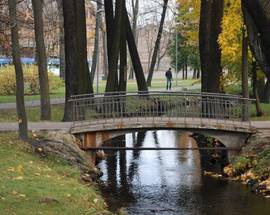
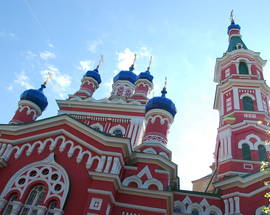
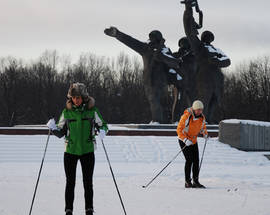
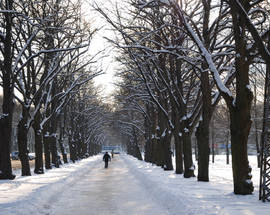
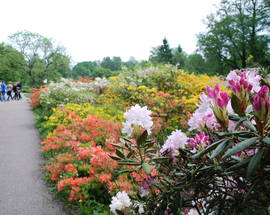
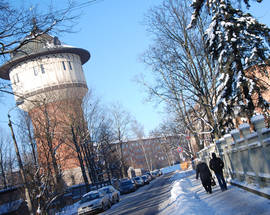
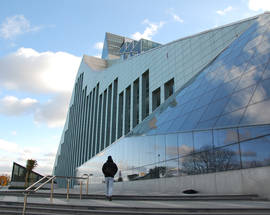
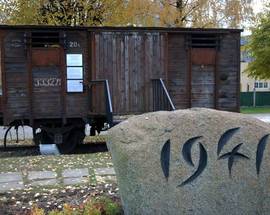
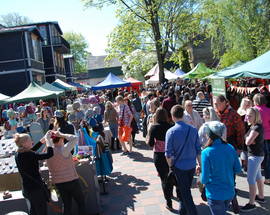
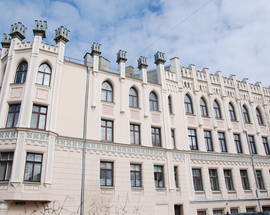
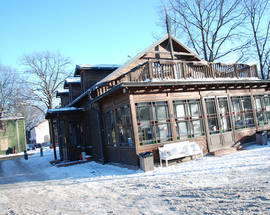
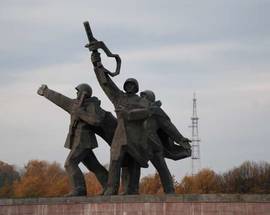
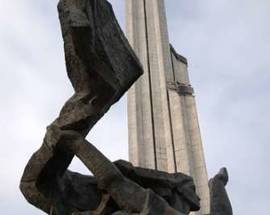
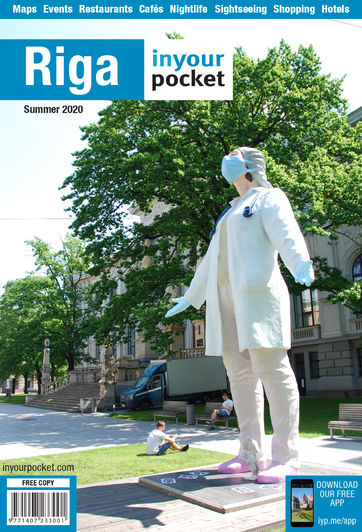


Comments